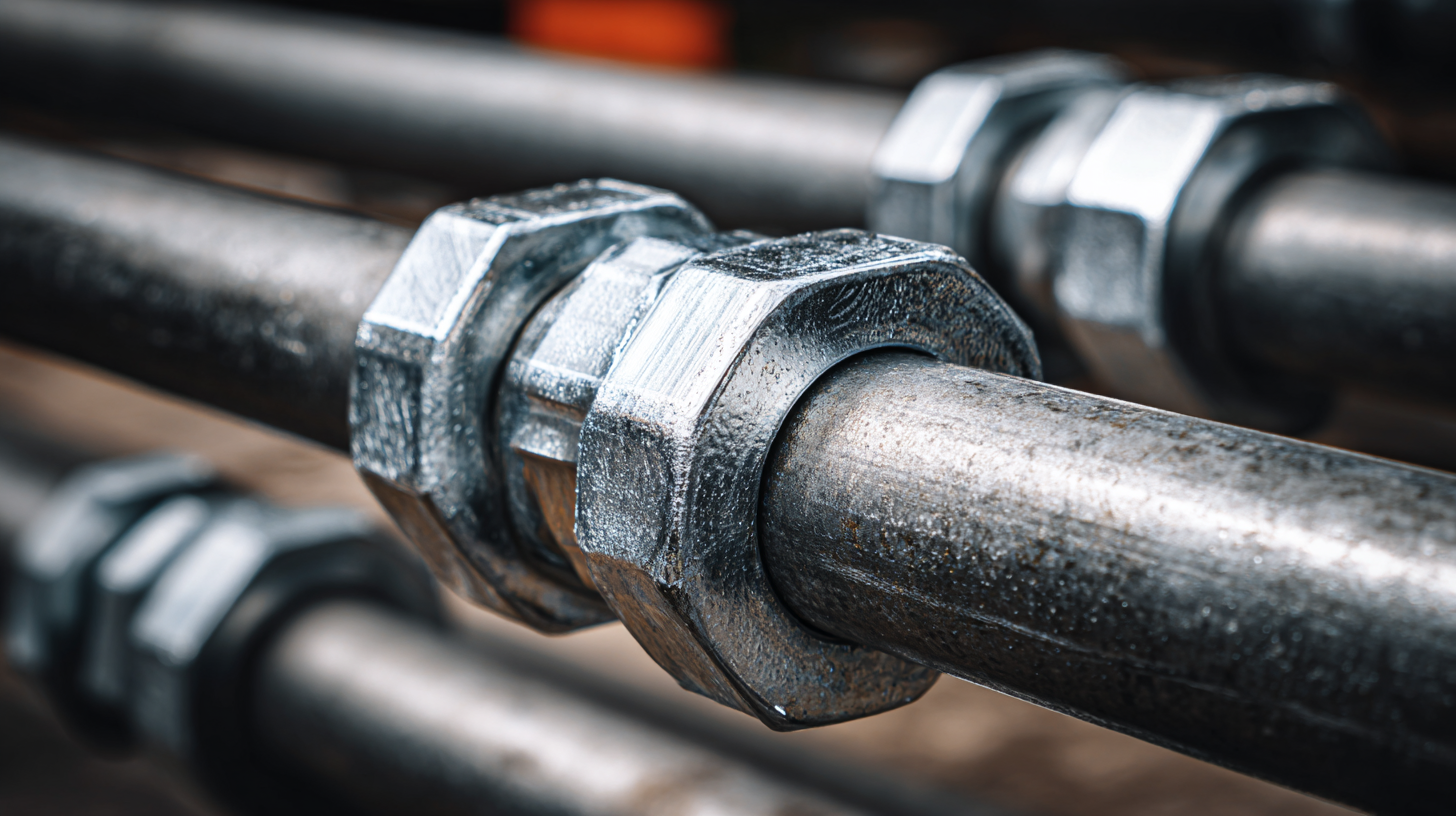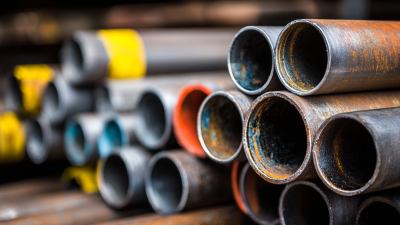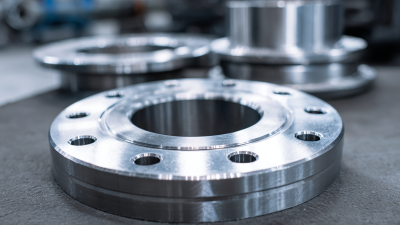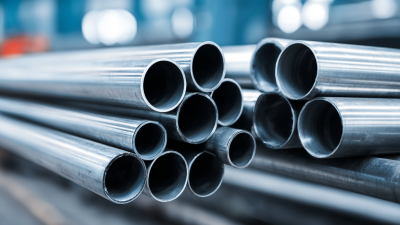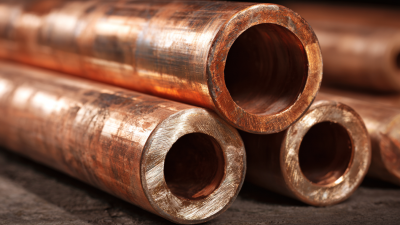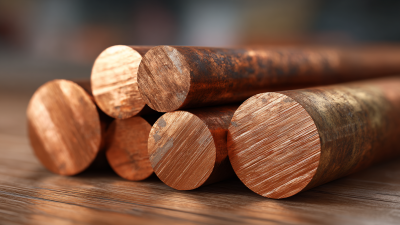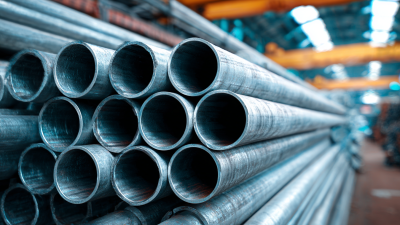Unlocking the Versatility of Steel Pipe Fittings: Essential Guide for Construction and Industry
In the dynamic world of construction and industrial applications, understanding the significance of various components is crucial for achieving efficiency and reliability. Among these essential components, the Steel Pipe Fitting stands out as a versatile and indispensable element that plays a vital role in connecting pipes, ensuring the smooth flow of liquids and gases across a multitude of systems. This essential guide aims to delve into the importance of steel pipe fittings, offering insights into their myriad applications within different sectors.
From water supply systems to oil and gas pipelines, Steel Pipe Fittings serve as critical junctions that facilitate seamless operations. Their robust properties, including durability, strength, and resistance to corrosion, affirm their status as a preferred choice in both domestic and industrial environments. This guide will explore the "Top 10" types of Steel Pipe Fittings that are revolutionizing construction practices, unveiling how these fittings enhance performance while ensuring safety and compliance with industry standards. As we embark on this exploration, it becomes evident that mastering the nuances of steel pipe fittings is not just beneficial; it's essential for anyone involved in construction and industrial projects.
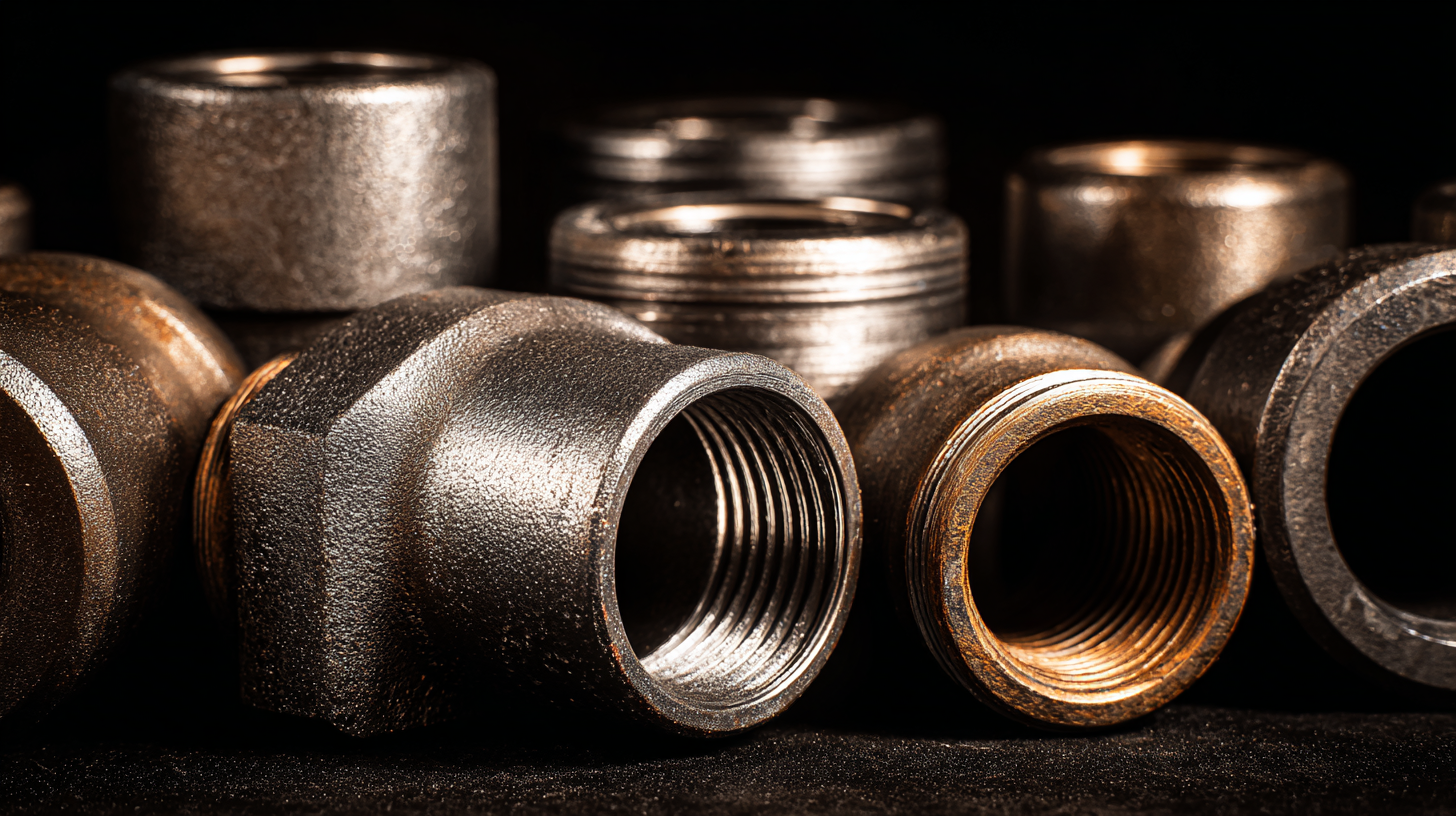
Understanding the Basics of Steel Pipe Fittings in Construction and Industry
Steel pipe fittings are integral components in construction and industrial applications, serving as essential connectors for piping systems. Understanding the basics of these fittings is crucial for ensuring the efficiency and safety of any piping project. These fittings come in various shapes and sizes, such as elbows, tees, reducers, and couplings, each designed to connect, redirect, or terminate piping as needed. Familiarity with the specifications and standards associated with steel pipe fittings helps in selecting the right components that meet the demands of specific applications.
Moreover, the materials and design of steel pipe fittings play a significant role in their durability and performance. Typically made from carbon steel, stainless steel, or alloy steel, these fittings are chosen based on factors like pressure ratings, temperature conditions, and the nature of the fluids being transported. Proper installation techniques and adherence to industry standards are essential to prevent leaks and ensure long-term reliability. By mastering these fundamental concepts, construction and industry professionals can effectively utilize steel pipe fittings to create robust and efficient systems.
Unlocking the Versatility of Steel Pipe Fittings: Essential Guide for Construction and Industry
| Fitting Type |
Material |
Size (Inches) |
Pressure Rating (PSI) |
Applications |
| Elbow |
Carbon Steel |
1/2 - 48 |
150 - 3000 |
Oil & Gas, Water Supply |
| Tee |
Stainless Steel |
1/2 - 24 |
150 - 1500 |
Chemical Processing, Food Industry |
| Reducer |
Alloy Steel |
1 - 12 |
300 - 6000 |
HVAC, Industrial Piping |
| Cap |
Galvanized Steel |
1/2 - 8 |
150 - 3000 |
Water Works, Pressure Systems |
| Coupling |
PVC Coated Steel |
1/2 - 6 |
150 - 600 |
Construction, Infrastructure |
Key Types of Steel Pipe Fittings: Functions and Applications
Steel pipe fittings play a crucial role in construction and various industries, serving significant functions like connecting, redirecting, and terminating pipe systems. Key types of steel pipe fittings include elbows, tees, reducers, and flanges, each designed for specific applications. For example, elbows enable smooth changes in direction for piping, while tees allow for branching off into multiple lines. The choice of fittings can impact the efficiency and integrity of fluid systems, making understanding their functions essential for engineers and construction professionals.
As the global thermoplastic pipe market is poised to reach an estimated value of $6.14 billion by 2027, the demand for versatile and durable steel pipe fittings continues to grow. This uptick indicates a broader industrial reliance on steel components for enhanced performance and longevity in piping systems.
Tips: When selecting steel pipe fittings, consider the material compatibility and pressure ratings to ensure optimal system performance. Additionally, always consult manufacturer specifications for installation instructions to avoid costly repairs down the line. Regular inspections and maintenance of pipe fittings can also prevent leaks and ensure safe operation within industrial applications.
Benefits of Using Steel Pipe Fittings in Various Industries
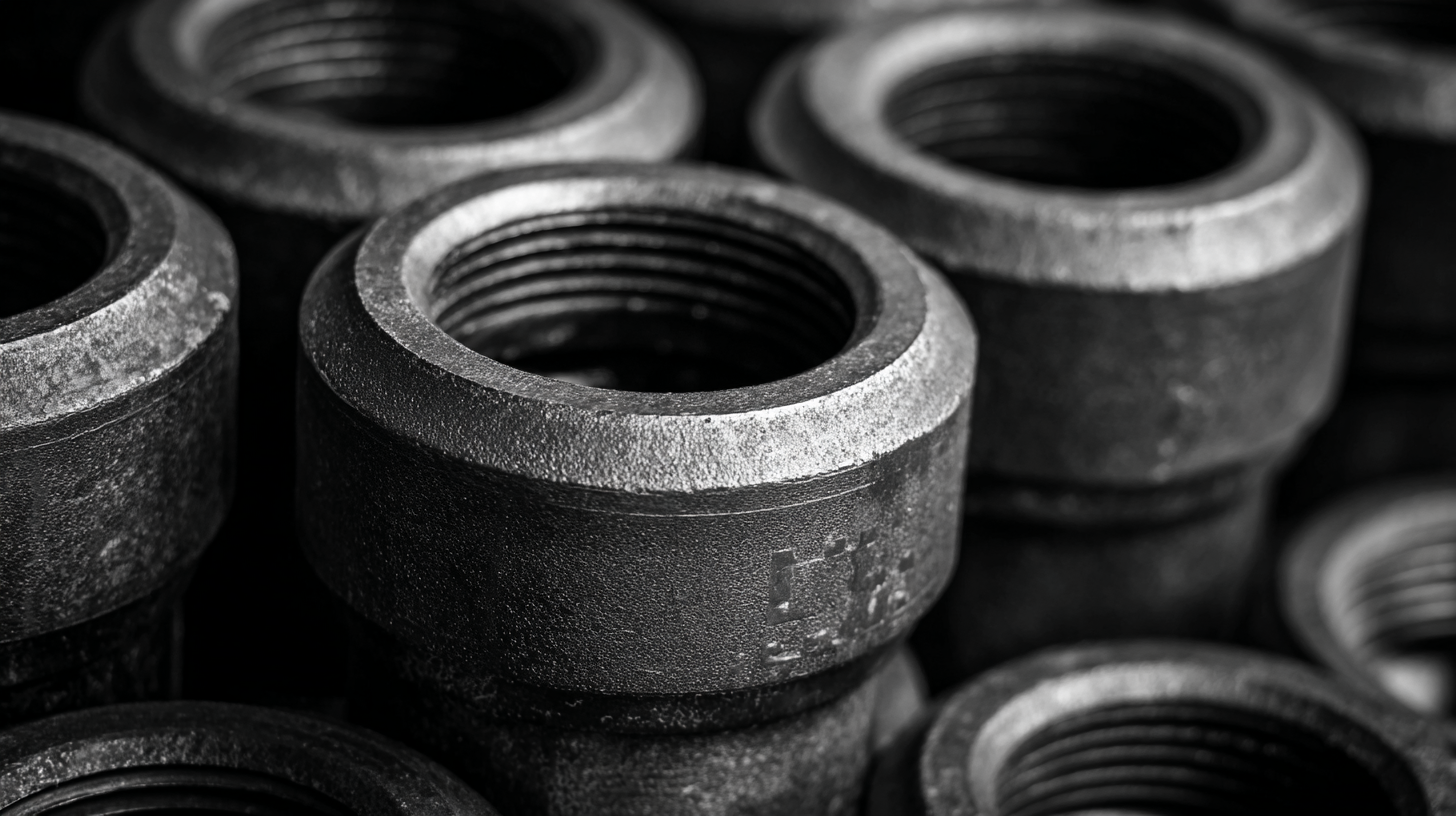 Steel pipe fittings are crucial components across various industries, playing a vital role in ensuring the efficiency and safety of piping systems. The benefits of using steel pipe fittings are manifold, particularly their strength and durability. According to a report by the American Society of Mechanical Engineers (ASME), steel fittings are able to withstand extreme temperatures and pressures, making them ideal for applications in industries such as oil and gas, construction, and manufacturing. The report highlights that steel pipe fittings can reduce the risk of leaks and failures by up to 30%, demonstrating their importance in maintaining system integrity.
Steel pipe fittings are crucial components across various industries, playing a vital role in ensuring the efficiency and safety of piping systems. The benefits of using steel pipe fittings are manifold, particularly their strength and durability. According to a report by the American Society of Mechanical Engineers (ASME), steel fittings are able to withstand extreme temperatures and pressures, making them ideal for applications in industries such as oil and gas, construction, and manufacturing. The report highlights that steel pipe fittings can reduce the risk of leaks and failures by up to 30%, demonstrating their importance in maintaining system integrity.
Moreover, the versatility of steel pipe fittings allows them to be used in diverse applications, from residential plumbing to large-scale industrial operations. A statistical analysis published by the International Association of Plumbing and Mechanical Officials (IAPMO) shows that the use of steel fittings increases overall system lifespan by 15-20%. This longevity not only enhances safety but also contributes to cost savings in maintenance and replacement. As industries continue to evolve, the demand for reliable and efficient piping systems makes steel pipe fittings an indispensable choice for engineers and contractors alike.
Essential Factors to Consider When Selecting Steel Pipe Fittings
When selecting steel pipe fittings for construction and industrial applications, several essential factors must be considered to ensure optimal performance and safety.
First, it’s crucial to assess the material compatibility of the fittings with the pipes being used, as this can affect durability and leak resistance.
Different projects may require fittings made from various grades of steel, each offering different strengths and corrosion resistance levels.
Tips: Always check for the material specifications and certifications of your fittings to avoid any compatibility issues that might arise during installation.
Another important factor is the fitting’s pressure rating, which determines how much pressure the fitting can withstand under different operating conditions.
Ensuring that your fittings match or exceed the expected pressure levels of the system is vital for maintaining safety and functionality.
Additionally, consider the fitting types—elbows, tees, reducers, and others—based on the specific routing and design of the piping system.
Tips: Evaluate the flow requirements and the layout of your piping system to select the most appropriate types of fittings that will enhance efficiency and reduce pressure drops.
Maintenance and Safety Tips for Steel Pipe Fittings in Use
When working with steel pipe fittings, maintenance and safety are paramount
to ensure long-lasting functionality and to prevent accidents in construction and industrial settings. Regular inspections should be conducted to identify any signs of corrosion, cracks, or wear. This proactive approach not only extends the life of the fittings but also helps avert major failures that could lead to hazardous incidents. It's essential to clean fittings regularly to remove any debris or substances that could compromise their integrity.
Proper handling and installation techniques are crucial for maintaining safety. Workers should always wear appropriate personal protective equipment (PPE) to reduce the risk of injury from sharp edges or falling components. Additionally, following manufacturer guidelines for torque specifications during assembly can enhance the fitting's performance and prevent leaks or failures. By prioritizing maintenance and adhering to safety protocols, industries can effectively utilize steel pipe fittings while minimizing risks associated with their use.

Home
About Us
Products
Carbon & Carbon Alloy Steel
Stainless Steel
Copper & Nickel Alloy
Heat Efficiency Tubes
Pipe Fittings
Pipe Flanges
Gasket, Stud Bolt &Nut
Industrial Valves
Tech & Service
Blog
Contact Us



 Steel pipe fittings are crucial components across various industries, playing a vital role in ensuring the efficiency and safety of piping systems. The benefits of using steel pipe fittings are manifold, particularly their strength and durability. According to a report by the American Society of Mechanical Engineers (ASME), steel fittings are able to withstand extreme temperatures and pressures, making them ideal for applications in industries such as oil and gas, construction, and manufacturing. The report highlights that steel pipe fittings can reduce the risk of leaks and failures by up to 30%, demonstrating their importance in maintaining system integrity.
Steel pipe fittings are crucial components across various industries, playing a vital role in ensuring the efficiency and safety of piping systems. The benefits of using steel pipe fittings are manifold, particularly their strength and durability. According to a report by the American Society of Mechanical Engineers (ASME), steel fittings are able to withstand extreme temperatures and pressures, making them ideal for applications in industries such as oil and gas, construction, and manufacturing. The report highlights that steel pipe fittings can reduce the risk of leaks and failures by up to 30%, demonstrating their importance in maintaining system integrity.
